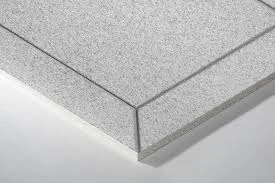- Afrikaans
- Albanian
- Amharic
- Arabic
- Armenian
- Azerbaijani
- Basque
- Belarusian
- Bengali
- Bosnian
- Bulgarian
- Catalan
- Cebuano
- Corsican
- Croatian
- Czech
- Danish
- Dutch
- English
- Esperanto
- Estonian
- French
- German
- Greek
- Hindi
- Indonesian
- irish
- Italian
- Japanese
- Korean
- Lao
- Malay
- Myanmar
- Norwegian
- Norwegian
- Polish
- Portuguese
- Romanian
- Russian
- Serbian
- Spanish
- Swedish
- Thai
- Turkish
- Ukrainian
- Uzbek
- Vietnamese
Dec . 13, 2024 13:51 Back to list
hvac access panel ceiling
Understanding HVAC Access Panels in Ceilings
In modern building construction, HVAC (Heating, Ventilation, and Air Conditioning) systems are essential for maintaining indoor air quality, thermal comfort, and energy efficiency. A critical component that facilitates the effective functioning of these systems is the access panel, especially in areas such as ceilings. In this article, we delve into the significance of HVAC access panels in ceilings, their types, installation, and maintenance.
What is an HVAC Access Panel?
An HVAC access panel is a removable panel installed in ceilings, walls, or floors that provides entry to ductwork, plumbing, electrical systems, and other utilities. These panels allow for easy access to components that may need occasional inspection, maintenance, or repair without the need for invasive procedures that could damage surrounding structures. In ceilings specifically, access panels are crucial for system efficiency and longevity.
Importance of HVAC Access Panels in Ceilings
1. Maintenance Access Regular maintenance is vital for the longevity and efficiency of HVAC systems. Access panels enable technicians to reach ducts, filters, and valves with ease. This not only saves time but also ensures that the systems function optimally, minimizing energy waste.
2. Efficiency Adequately maintained HVAC systems operate more efficiently, leading to lower energy bills. By providing access to critical components, these panels help in timely inspections and servicing, reducing the likelihood of breakdowns and costly repairs.
3. Improved Air Quality Over time, dust, allergens, and pollutants can accumulate in HVAC systems. Access panels allow for easy cleaning and replacement of air filters, helping to maintain high indoor air quality, which is crucial for occupant health and comfort.
4. Code Compliance Many building codes require access to HVAC systems for inspections and modifications. By installing access panels, builders and facility managers ensure compliance with these regulations, preventing legal issues and potential fines.
5. Aesthetic Considerations Access panels come in various designs that can blend seamlessly with ceiling tiles or drywall. This allows building owners to maintain aesthetic appeal while ensuring practicality.
Types of HVAC Access Panels
There are several types of access panels suited for different applications
1. Standard Access Panels These are typically made from metal or plastic and are ideal for straightforward access in residential and commercial settings.
hvac access panel ceiling

3. Acoustic Access Panels These panels are designed to minimize sound transmission, making them suitable for environments where noise reduction is a priority.
4. Customized Access Panels For specialized applications or unique architectural designs, customized access panels can be fabricated to meet specific requirements.
Installation Considerations
The installation of HVAC access panels in ceilings should be done carefully to ensure functionality and compliance with building codes. Here are some considerations
- Location Panels should be strategically placed near critical components for easy access. Common locations include above ceilings, above ductwork, and near mechanical equipment.
- Size Choosing the right size for access panels is crucial. They should be large enough to allow easy access but not so large that they compromise the building structure or aesthetic.
- Sealing Proper sealing around the panel is necessary to prevent air leaks, which could lead to energy loss and reduced system efficiency.
Maintenance of Access Panels
Once installed, maintaining HVAC access panels is essential to ensure their continued functionality - Regularly check for any signs of wear or damage. - Ensure that the panels close securely to avoid air leaks. - Clean around the panels to prevent dust accumulation.
Conclusion
HVAC access panels in ceilings are an indispensable element of modern building design. They provide essential access for maintenance, promote efficiency, ensure compliance with safety regulations, and maintain aesthetic appeal. By understanding their importance and adhering to best practices regarding installation and maintenance, building owners can significantly enhance the performance and longevity of their HVAC systems.
-
Transform Interiors with PVC Gypsum Ceiling: A Stylish, Durable, and Moisture-Resistant SolutionNewsMay.19,2025
-
The Smart Interior Upgrade: Discover the Durability and Versatility of Gypsum Ceiling Access Panel SolutionsNewsMay.19,2025
-
The Smart Choice for Interior Design: Discover the Value of PVC Gypsum Ceiling SolutionsNewsMay.19,2025
-
Mineral Fiber Ceiling Tiles: The Smart Blend of Performance and AestheticsNewsMay.19,2025
-
Mineral Fiber Ceiling Tiles: The Superior Choice Over Gypsum for Sound and Fire SafetyNewsMay.19,2025
-
Mineral Fiber Ceiling Tiles: Eco-Friendly Strength and Style for Every CeilingNewsMay.19,2025







